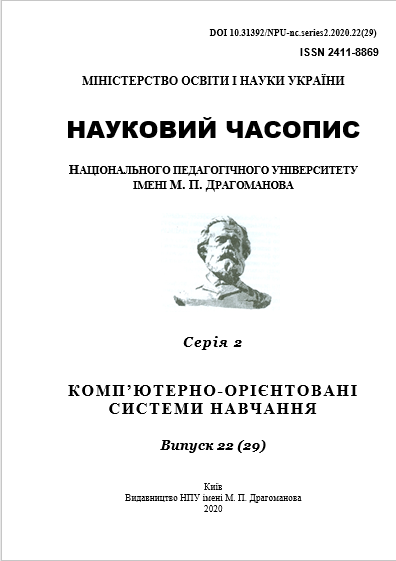SPECIAL APPLICATION OF OWN DEVELOPMENT FOR DEMONSTRATION AND COMPARISON OF ALGORITHMS FOR SORTING AND SEARCHING DATA
DOI:
https://doi.org/10.31392/NPU-nc.series2.2020.22(29).11Keywords:
sorting and search algorithms, demonstration of work, complexity of the algorithm, UML modeling, functional model, software, applicationAbstract
The article describes a special application of own design that allows students studying algorithms for sorting and searching data to observe the process and analyze the advantages and disadvantages of several methods to better understand the principles of their work. Some algorithms for sorting and searching data are considered, existing software systems (Internet sites) for solving the problem, their features, advantages, and disadvantages are analyzed. The development of an object-oriented model of the software system by means of visual modeling UML (diagrams of use cases and a class diagram are presented) and a functional model in BPWin notation (first and second levels are given). The available algorithms are listed: Bubble Sort, Insert Sort, Selection Sort, Merge Sort, Quick Sort, Shaker Sort, Gnome Sort, Shell Sort, Binary Sort, Sequential Search, Binary Search. Since the real operating time of the algorithm on a modern computer is too short, and the user will not have time to understand the principles of its operation, it was decided to add a delay after each step, which significantly increased the time when demonstrating the operation of one algorithm. Examples of using the developed application are given data entry and demonstration of the sorting algorithm by exchanges, comparison of sorting algorithms for randomly filling an array of 25000 elements according to the criteria "Running time" and "Number of iterations". The possibility of changing the interface language is noted. The use of the help system is described. A typical sequence of work with the created application is considered. It is concluded that the developed application can become an additional element of information and communication teaching aids in the presentation of relevant disciplines – for example, "Algorithms and data structures" for specialties of the industry 12 "Information technology".

